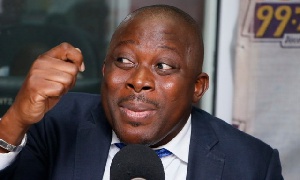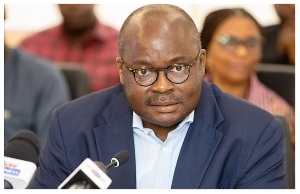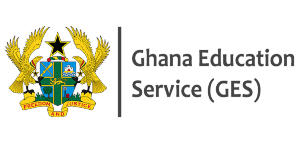From a high vantage point, the lines of trucks and cars stretch as far as the eye can see in both directions – South Africa’s major arterial export route from the mining, industrial, and manufacturing heartland has once again been clogged to immovable congestion.
Such was the situation through most of last week, a recurring and escalating problem reflecting the rapid deterioration of the rail cargo, ports, and road infrastructure of the leading manufacturing economy in Africa.
So bad have things become that Transnet, the government-owned ‘corporatised’ entity in charge of cargo rail and the country’s ports, had early this week to engage in a public explanation of what has gone wrong, and why there is ongoing deterioration, in South Africa’s ports and in its cargo handling.
Transnet’s container ports, mostly situated in Durban and Cape Town, are rated among the world’s worst in terms of efficiency, featuring in the bottom 10 of 348 ports ranked by the World Bank in its latest container port performance index.
Its ports are rapidly losing market share and investment attractiveness to more efficient operators in other African coastal cities along the continent’s Indian Ocean interface, including Mombasa, Dar es Salaam, Djibouti, Maputo, and even in Somalia.
Transnet, managers of the eight commercial seaports along South Africa's 2,954km coastline, says backlogs and delays in moving shipping containers through its largest and busiest port in Durban have so far cost it at least $8.7 million this year alone – with no short-term resolution in sight, despite “recovery plans”.
That loss to the fiscus also represents a huge turnover loss for the financially troubled state rail cargo and ports managing entity, which is already looking to the cash-strapped government for additional funding to work its way out of the deep hole which decades of managerial neglect, incompetence, and corruption – along with rampant theft and accompanying vandalism – have left it in.
In a bid to account for the increasingly unhappy business sector, which says it is losing not merely millions, but potentially billions, unless the problem is fixed quickly – a high improbability – Transnet’s management addressed the “critical situation” damaging export earnings and earning potential.
The initial figure of losses to date in the current fiscal year, coming on top of losses for several years preceding, means that about 60 percent of the country’s container volumes are being held hostage to a lack of operational capacity in Durban in particular, with some other ports in similar if slightly less intense conditions.
The situation is severe enough to be damaging exports viability, making South African goods and produce less reliable and affordable, while also sharply curtailing foreign earnings, and even impacting the flow of goods to and from neighbouring countries in the SA Development Community, such as Zimbabwe, Malawi, Zambia, Lesotho, Eswatini and Botswana, in the main, but with some impacts reaching as far as Tanzania, Angola, and the DRC.
The rail and ports operator's loss of $306 million in the 2022-23 financial year is attributed mainly to worsening performance, with rail volumes falling 13.6 percent to 149 million tonnes from 173 million tonnes in 2021-22.
There is currently at least a two-week backlog to clear container vessels queuing for dock space, according to Transnet. Not only is the situation long-standing, leading to frustration of shipping and even road cargo carriers which are operating at near full stretch to make up for the rail cargo haulage issues facing Transnet.
At fault, say Transnet officials, are aging equipment, inclement weather, and the “paralysis” of managers after Transnet’s spate of dismal performances in recent years, with no more top-ups to be expected from the equally cash-strapped national treasury.
The South African fiscus is under tremendous pressure after the mid-term budget report recently indicated a huge multi-billion-dollar revenue shortfall against expectations, due mainly to a weakened and weakening economy, reduced consumer spending, and high levels of unemployment at over 30 percent formally, with about 10 percent more if including those who have given up looking for jobs.
The problems at the country’s ports are heavily exacerbated by the much-reduced capacity of Transnet’s rail cargo system – much damaged by decades of inadequate development and maintenance, plus stripping by thieves during Covid lockdowns of railway electricity cables, along with whatever else could be physically torn out of railway stations, leaving in some instances just bricks standing.
Transnet was, as a result of the compounding problems it is facing and the severe knock-on effects on the wider economy, engaged in “an emergency meeting” with Richards Bay Port users and stakeholders to confront there the severe truck congestion on the N2 highway outside that port, also an ongoing challenge.
That the other major national highway and arterial road route through KwaZulu-Natal to Durban, the N3, is also regularly being reduced to nose-to-tail snail’s pace traffic jams has driven home the urgency of the problem, with warnings from various sectoral operators that the country was in danger of losing vital export markets due to inability to get goods to and through ports on schedule.
The problems at the ports, on the cargo rail lines, and now on the national roads, have been occurring on and off for years but extensive backlogs are rapidly becoming the norm, with 63 ships awaiting docking facilities at Durban at last count, and lying outer anchorage over the weekend.
At the port’s two overwhelmed and under-resourced container terminals, some 20 vessels were queued for a slot on November 19.
A recent research report on the escalating problem by independent consultancy, the Gain Group, indicated that the joint rail cargo and ports problems were costing the country at least $19 billion annually in direct losses, with more yet in hidden costs. This amounts to roughly 5 percent of gross domestic product and is growing.
President Cyril Ramaphosa addressed this grave situation during this year's State of the Nation Address in February, saying then that a comprehensive “roadmap” to deal with the crisis was in process.
“We are working across government to develop a Transnet Roadmap that will translate our policy commitments into reality, including the restructuring of Transnet,” Ramaphosa told the nation.
“Transnet and private sector companies will conclude partnerships at the Durban and Ngqura container terminals, to enable new investment in our ports and improve their efficiency.
“This will help our ports regain their global position as some of the most efficient, once again.”
Last month, in response to a leaked draft report, Ramaphosa’s office was forced to put out a “clarification”, refuting media reports that the government wanted to “privatise” Transnet and the ports it runs.
Rather, the leaked draft proposed a ‘Freight Logistics Roadmap’, as envisaged by Ramaphosa in his national address, which would “improve the performance of South Africa’s ports and rail network and drive economic growth”, in collaboration with private businesses, but without government relinquishing control of the state-owned entity.
“Work is underway between the Presidency, the Department of Transport, the Department of Public Enterprises, and National Treasury to finalise the roadmap,” said Ramaphosa’s office.
“South Africa’s port and rail infrastructure are strategic national assets, and government has taken a clear stance that they will remain in public ownership.
“The National Logistics Crisis Committee (NLCC) has been established to address the immediate challenges in the freight logistics system, which have severely constrained exports and undermined investment and job creation in affected sectors.
The NLCC is overseeing a range of interventions to achieve this objective, including upgrading equipment and infrastructure, improving operational performance, increasing the availability of rolling stock, and securing the rail network,” said the statement, adding that these reforms would “result in massive new investment to revitalise South Africa’s logistics system”.
But, as that recent “clarification” indicates, the problems involved are still being discussed within the National Logistics Crisis Committee (NLCC), set up precisely to deal with these and related issues.
Gain, in its independent assessment, said that a presidentially mandated body ought to be a better approach than the “cooperative forums” of interested parties which had preceded it – but there is yet to be much on the way of ‘hard and fast’ plans put before the public and stakeholders.
Transnet Board Chairperson Andile Sangqu said the focus was on “clearing the backlogs and congestion at ports”, but warned in the same breath that it would, at best, “take months” for operations to return to acceptably efficient levels – and that was dependent also on other factors.
“The problem of port congestion is a complex one and it is something that was due to happen at some point, because of many years of underinvestment in equipment and its maintenance,” Sanggu said.
“We are working on several measures to turn the situation around. We need to caution that this is going to take some time as the lead times for some of the equipment is anything from 12 to 18 months,” the Transnet chair added.
“The team is working around the clock to procure this important equipment, to ensure our port facilities are in line with global best practice.”
Meanwhile, he added, Transnet had prioritised the optimisation of port operations, through improved planning and forecasting, which would lead to better anticipation of cargo volumes.
An “intervention team” had put immediate plans in place to confront the slow turnaround times which are affecting the docking and offloading of containers at Durban, where the port’s two container terminals’ employ 2,700 staff to handle over 40 percent of South Africa’s port traffic.
Spelling out the details, Transnet officials said Durban could handle six vessels at a time, and around 2,400 trucks and eight fully loaded cargo trains daily, with goods destined for more than 160 markets including the EU, UK, Middle East, and USA mainly.
Durban Container Terminal manager Earl Peters said the plan was for an efficiency ramp-up to handle 5,500 containers daily – currently at just 3,700, or about 75 percent of existing capacity – over the next three months.
In that plan, the backlog required the acquisition of 16 gantry cranes by the second half of 2025 and four ship-to-shore cranes in 2025-26.
Work was also underway to refurbish and maintain critical equipment to improve functionality, that programme to be completed by August 2024.
There would also be changes to how personnel were deployed through each working day and on numerous other elements with Transnet acting group chief executive Michelle Phillips adding that an internal task team from specialised disciplines had completed a study on the elimination of waste and to introduce “rapid improvements” across all functions.
“Management at our port terminals are working around the clock with industrial engineers from the task team to maximise berth performance,” Phillips added.
“It is crucial that we stabilise our operations through these short-term interventions while we continue with the broad recovery plan to improve Transnet operations.
“The plan is exactly what is says it is – turn around the business and ensure significant and sustainable improvements in all our operations and in particular in rail and ports.”
But even with some systems improved, the underlying problem is that Durban, along with other major export ports like Richards Bay, were originally designed to handle mainly rail cargo, not trucks, which means that even with pre-booked truck-borne cargo, the volumes arriving at the port gates sometimes “far exceeds the pace at which trucks can be processed”.
While long pre-existing, the delays and congestion at the port had significantly worsened through October, with Transnet blaming adverse weather conditions for causing its ageing port infrastructure to break down even more rapidly, and with some cranes and gantries having reached and exceeded their 15-year life cycle.
Transnet now hopes to clear the backlog by March next year, “at the latest”, but as officials acknowledged, that is still largely a “hope”, short of which ongoing losses and damage to the South African economy will continue.
Africa News of Saturday, 25 November 2023
Source: theeastafrican.co.ke

















